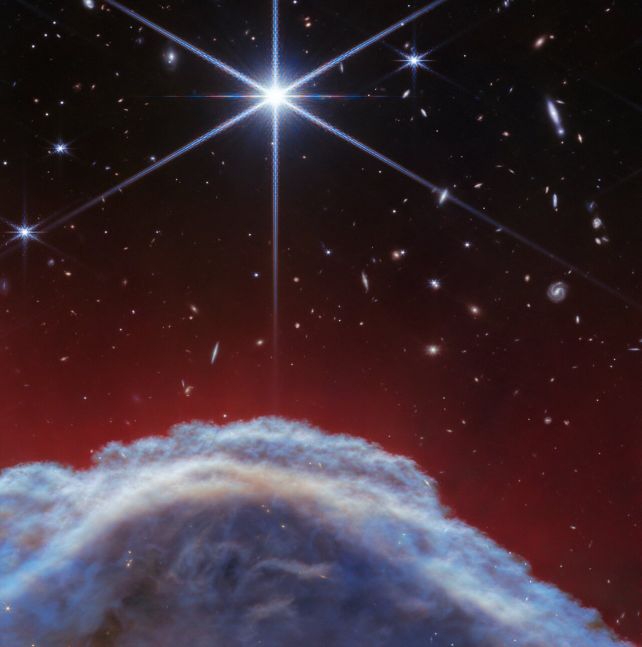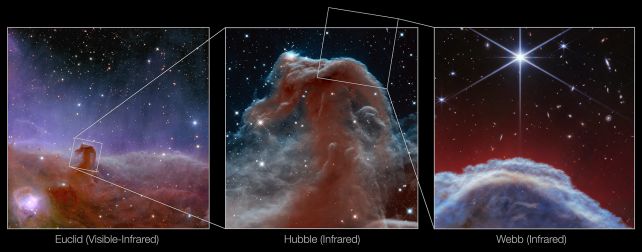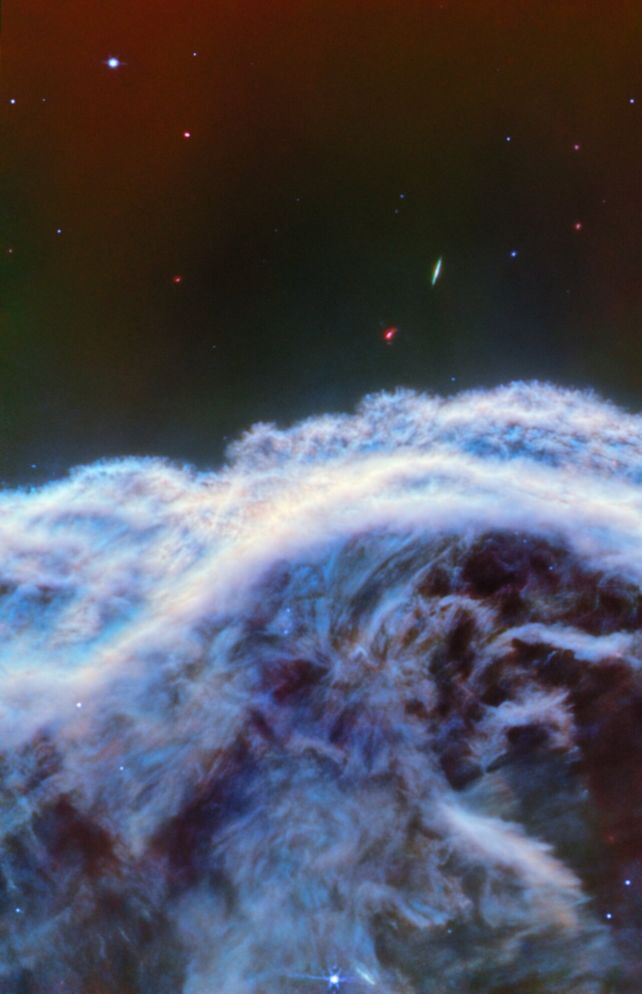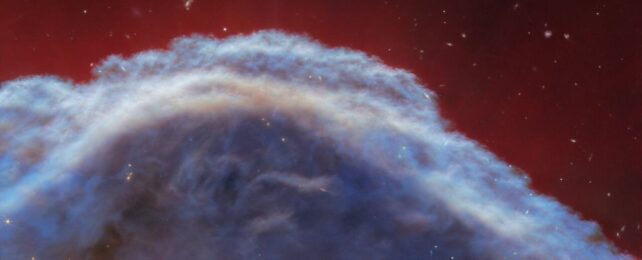One of the most famous structures in Earth's sky has just been revealed in a brand new light.
Mid- and near-infrared observations from the James Webb Space Telescope have highlighted never-before-seen features in the space cloud known as the Horsehead Nebula. In a breathtakingly detailed image, the space telescope zoomed in on the region atop the head of the 'horse', capturing tendrils and filaments in spectacular resolution.
Using a combination of 23 filters, a team of astronomers achieved such spectacular resolution that they could track the emission from grains smaller than 20 nanometers across, including particles of interstellar polycyclic aromatic hydrocarbons, as well as the light scattered by larger grains, and ionized hydrogen present in the cloud.

So-named for its resemblance to a horse's noggin, the Horsehead Nebula is a distinct cloud some 1,300 light-years away, forming part of the Orion molecular cloud complex. It's thick with dust and gas – so thick that it's as dark as shadows in optical light. In many photos, the cloud appears as a hole in the glowing gas around it.
Zoom in close or view it in wavelengths outside the range of normal human vision, the nebula's appearance transforms from dark void to glowing, billowing cloud. The Horsehead Nebula has no internal source of light, but is heated by a nearby complex called Sigma Orionis – a system of very young, large, hot stars that glow at temperatures of around 34,600 Kelvin.

This combination of traits makes the Horsehead Nebula an excellent laboratory for understanding stellar nurseries. The 'horsehead' itself is a dense clump of material that has collapsed under gravity, containing small stars in the process of forming that are shielded from our view by the dust itself.
But the intense radiation from the stars outside the nebula is having a devastating effect on the stuff around them. Far ultraviolet light causes a process called photodissociation, whereby molecules break apart under the harsh rays, creating a field of mostly neutral interstellar medium. So, around the Horsehead Nebula is what is known as a photodissociation region (PDR), which the JWST images will help probe.
The new observations can also help understand the photoevaporation process, whereby gas becomes ionized by powerful light and effectively evaporates.

So far, the images have allowed a team of scientists to tease out the small-scale structures that adorn the lit edge of the Horsehead Nebula, and a network of filaments perpendicular to the front of the PDR. This network contains dust and gas that make up part of the photoevaporative flow.
This is just the beginning, though. The next step will be an extensive analysis of the light emitted to tease out the chemical composition of the dust and gas, and the size and flow of the dust grains based on how light scatters. This will allow for a detailed model of the evolution of dust in the PDR, and help researchers understand how these clouds change and evaporate, eventually freeing the newborn stars trapped within.
The first paper has been accepted for publication in Astronomy & Astrophysics, and is available on arXiv.
